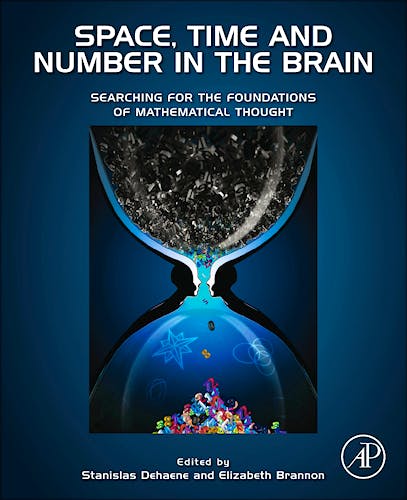

No hay productos en el carrito



Space, Time and Number in the Brain. Searching for the Foundations of Mathematical Thought
Brannon, E. — Dehaene, S.
1ª Edición Septiembre 2011
Inglés
Tapa dura
374 pags
1000 gr
null x null x null cm
ISBN 9780123859488
Editorial ACADEMIC PRESS
DESCRIPTION
The study of mathematical cognition and the ways in which the ideas of space, time and number are encoded in brain circuitry has become a fundamental issue for neuroscience. How such encoding differs across cultures and educational level is of further interest in education and neuropsychology. This rapidly expanding field of research is overdue for an interdisciplinary volume such as this, which deals with the neurological and psychological foundations of human numeric capacity. A uniquely integrative work, this volume provides a much needed compilation of primary source material to researchers from basic neuroscience, psychology, developmental science, neuroimaging, neuropsychology and theoretical biology.
TABLE OF CONTENTS
- Section I: Introduction to Mental representations of magnitudes
- Mental Magnitudes
- Objects, sets and ensembles
- Attentional mechanisms for counting in stabilized and in dynamic displays
- Section II: Introduction to Neural codes for space, time and number
- Plurality of the brain’s spatial representation system
- Temporal Neuronal Oscillations can Produce Spatial Phase Codes
- Population Clocks: Motor Timing with Neural Dynamics
- Discrete neuroanatomical substrates for feedforward versus feedback mechanisms of temporal prediction
- The neural code for number
- Section III: Introduction to hared mechanisms, links and metaphors
- Synaesthesia: A positive cognitive neuroscience approach to studying time, number and space
- How is number associated with space? The role of working memory
- Biases in spatial and numerical bisection: a causal link?
- Compression of the perceptual metric during saccadic eye movements
- Section IV: Introduction Ontogeny and phylogeny
- Origins of spatial, temporal and numerical cognition: Insights from animal model systems
- The approximate number system and the computations it supports as evidenced from a non-human primate model
- Origins of generalized magnitude representation
- Section V: Introduction to Development, education and representational change
- Foundational numerical capacities and the origins of dyscalculia
- Neurocognitive start-up tools for symbolic number representations
- Sources of Abstract Concepts: Natural Number and Natural Geometry
- Geometry as a universal mental construction
- How languages construct time
- Improving low-income children’s number sense
AUTHOR
Edited by Stanislas Dehaene, Director, INSERM-CEA Cognitive Neuroimaging Unit and Elizabeth Brannon, Center for Conginitive Neuroscience, Duke University
© 2025 Axón Librería S.L.
2.149.0